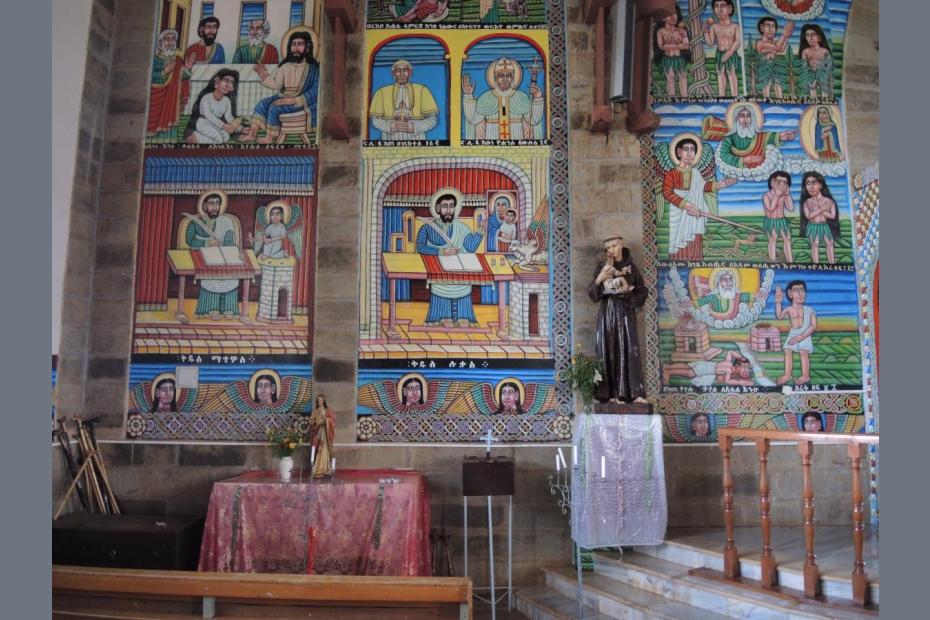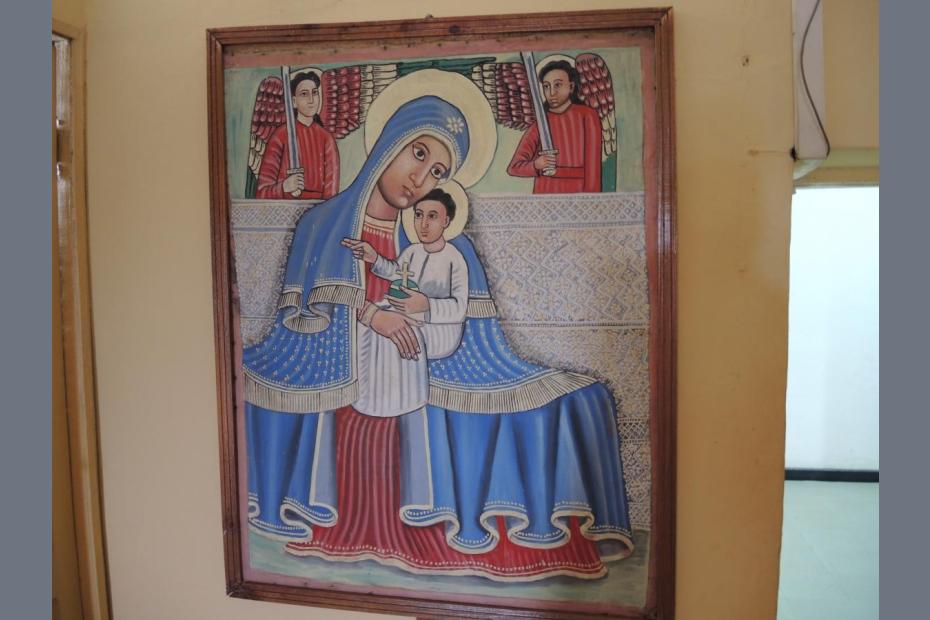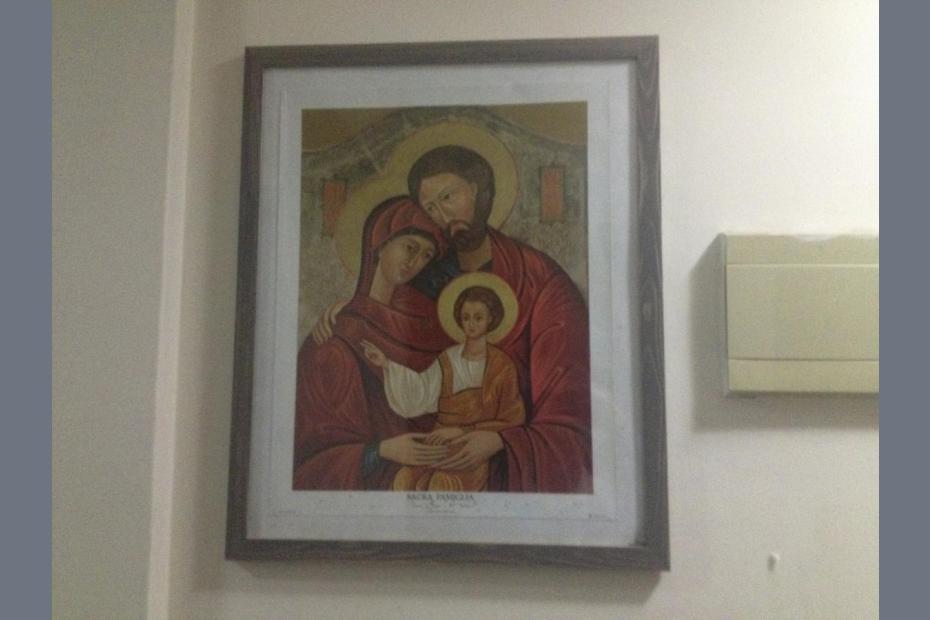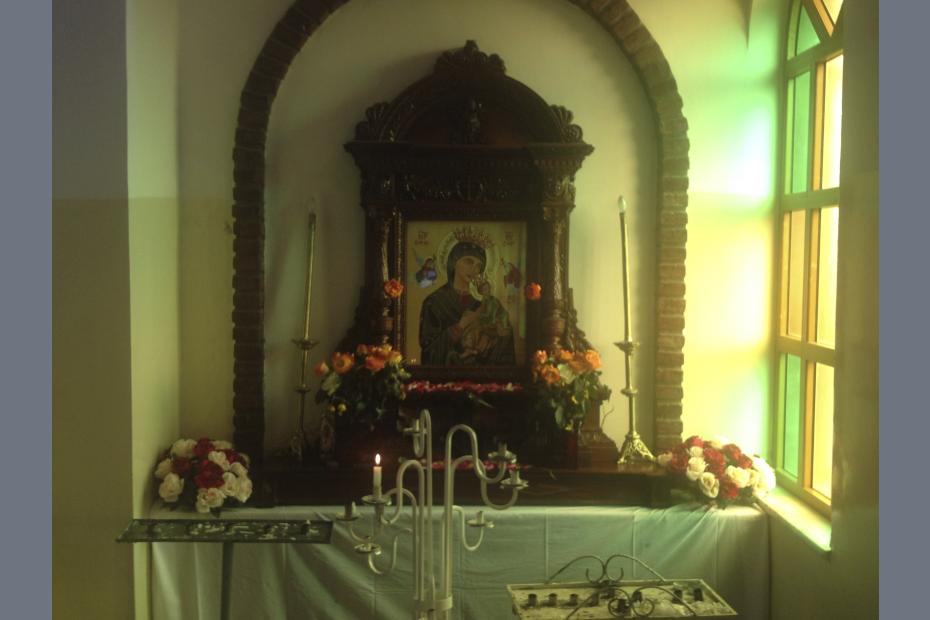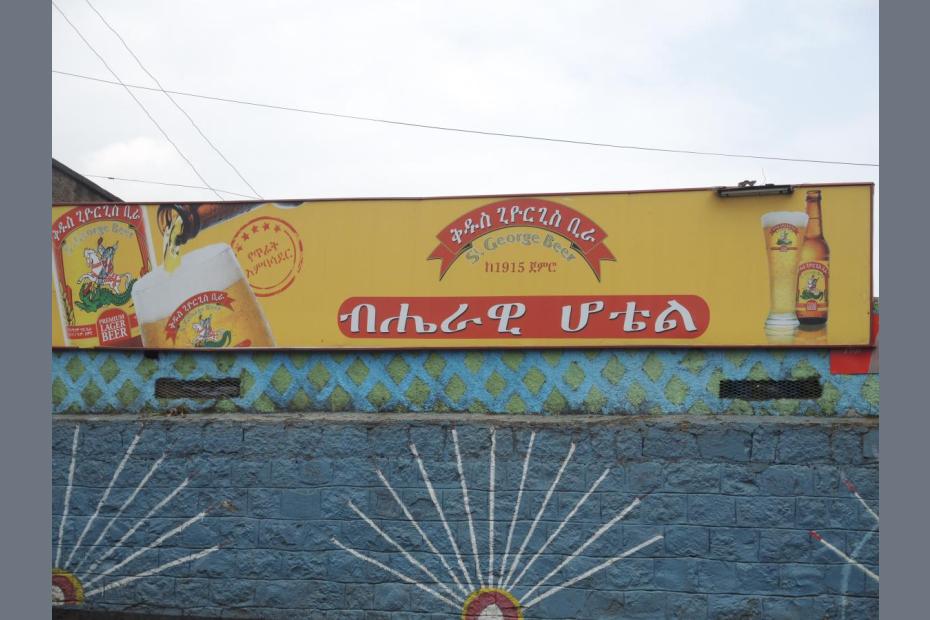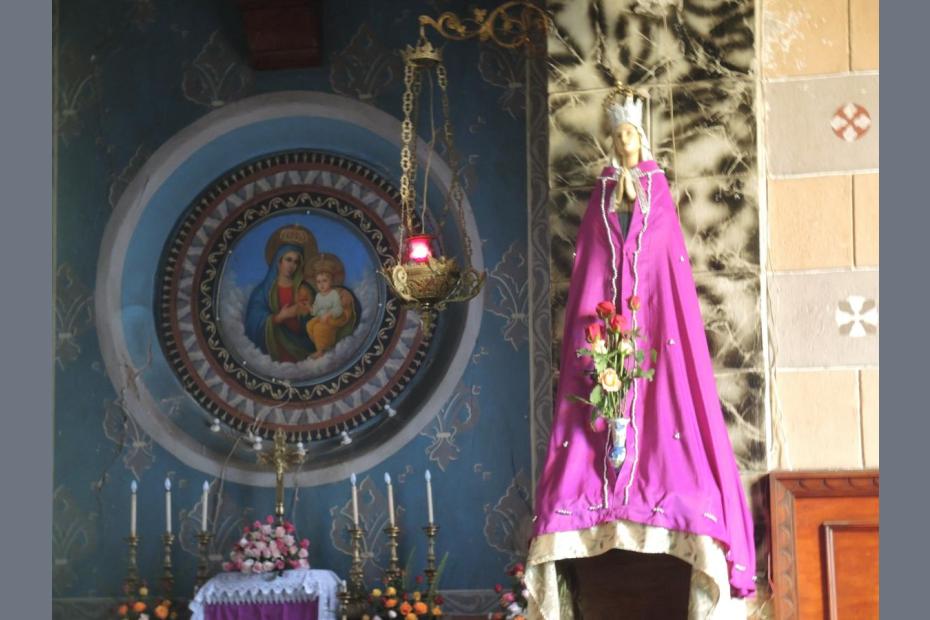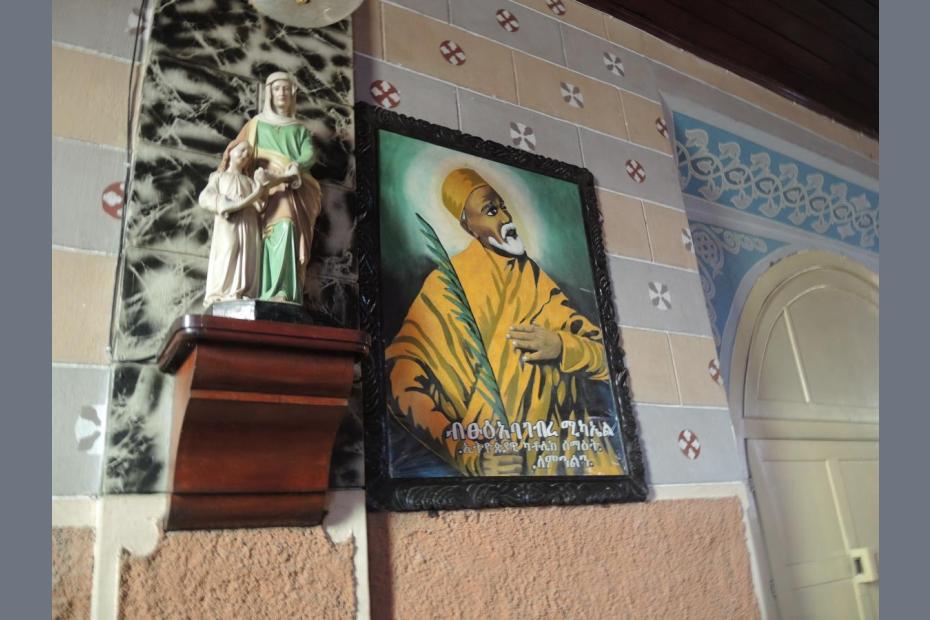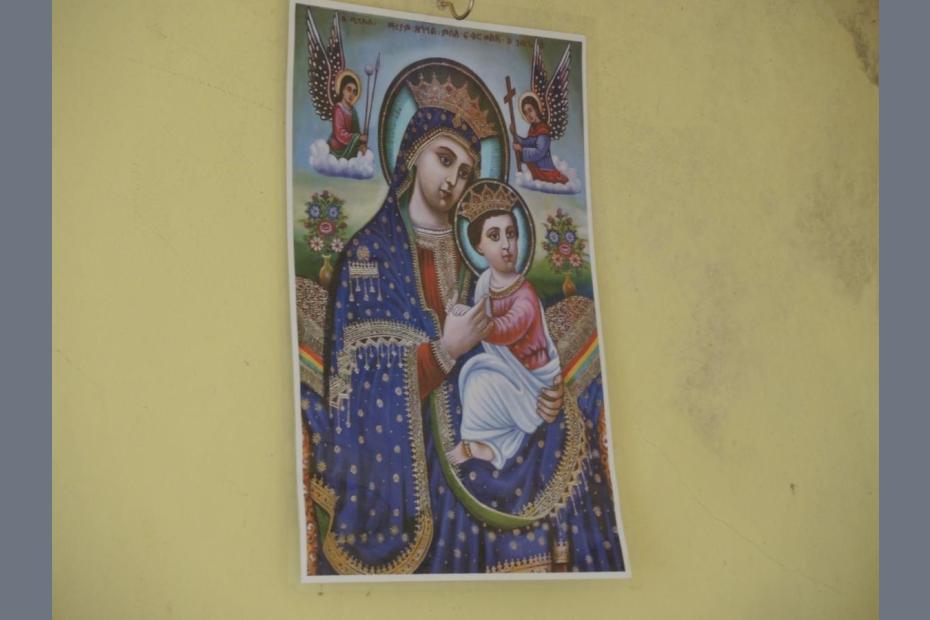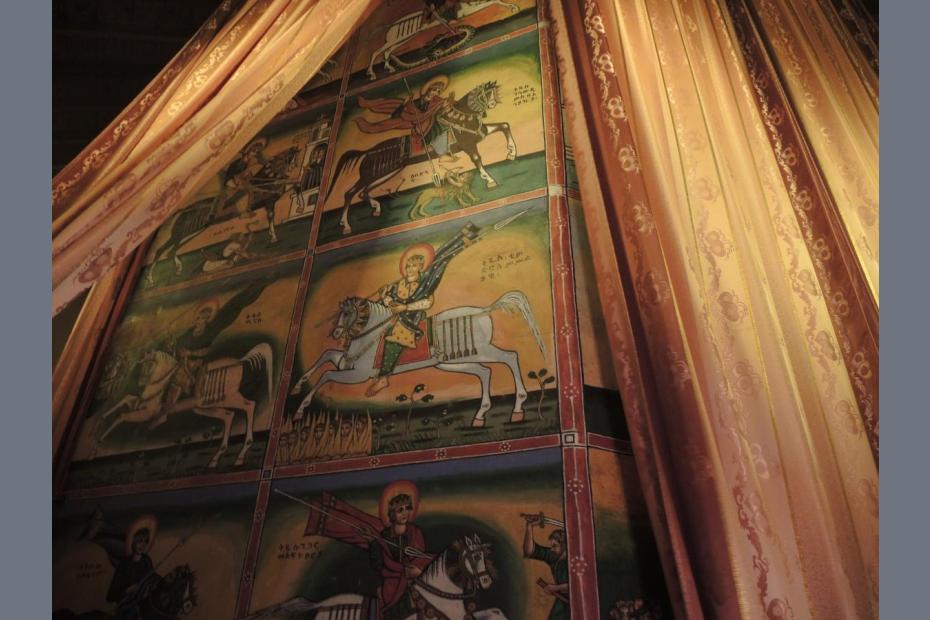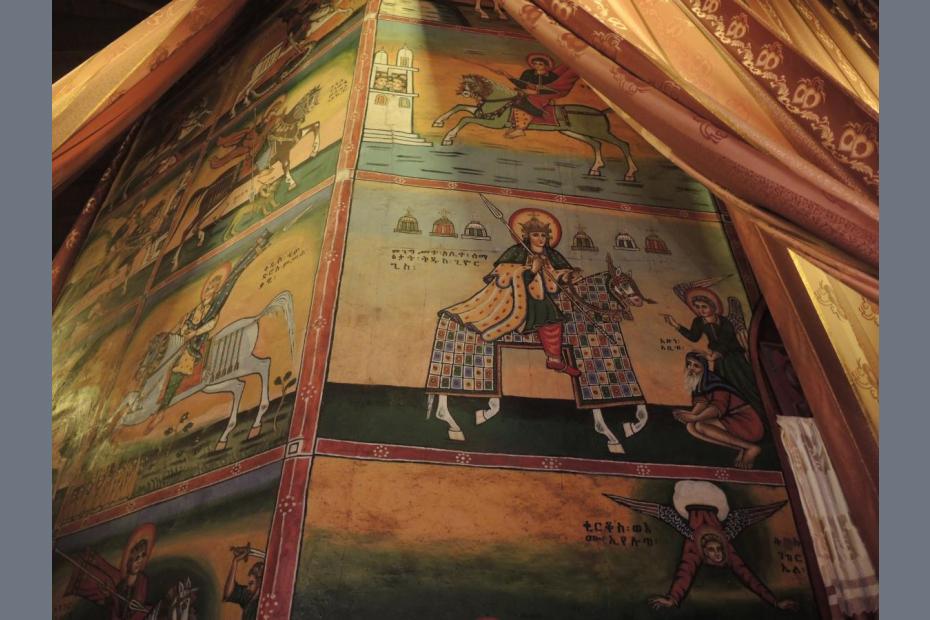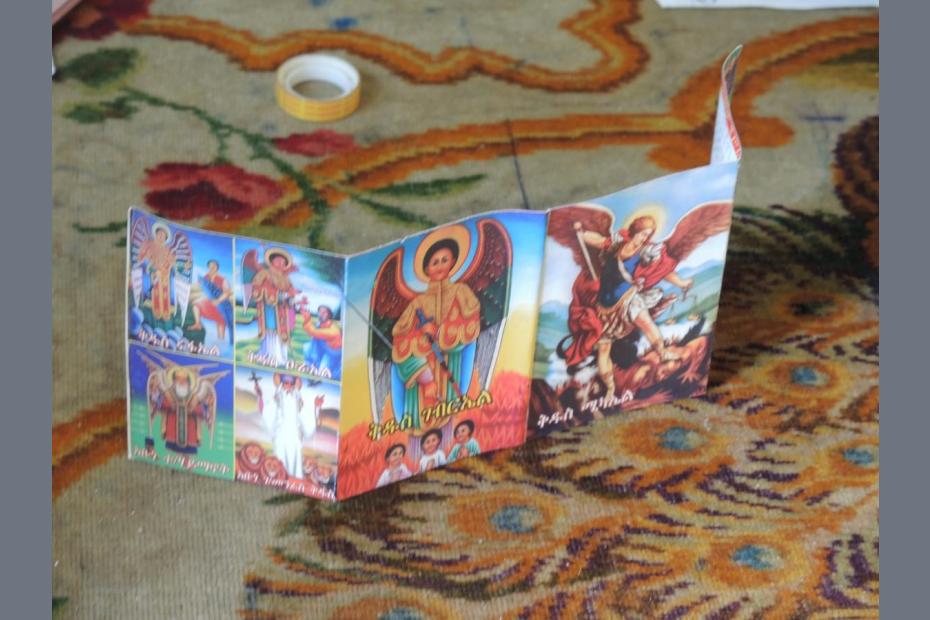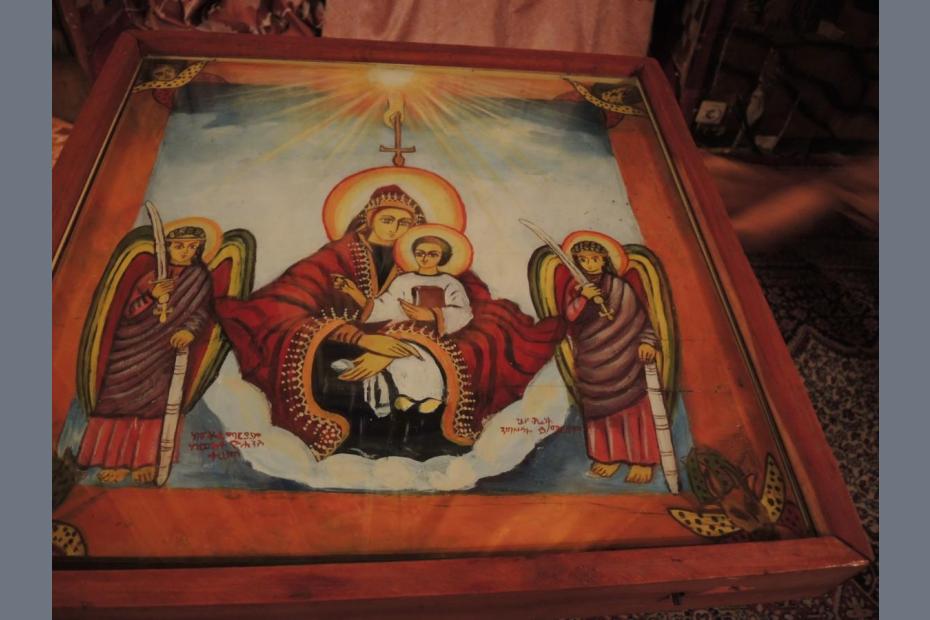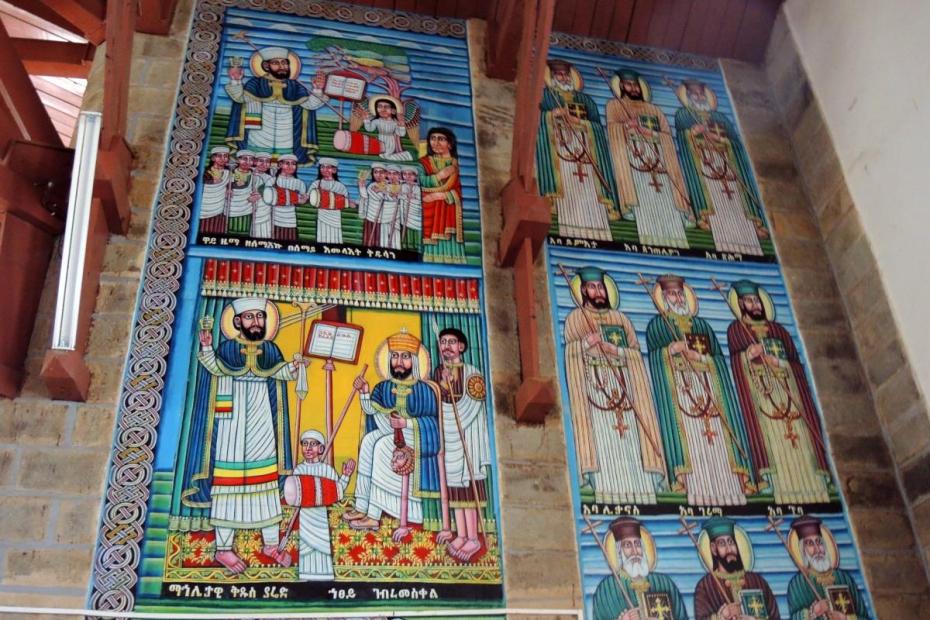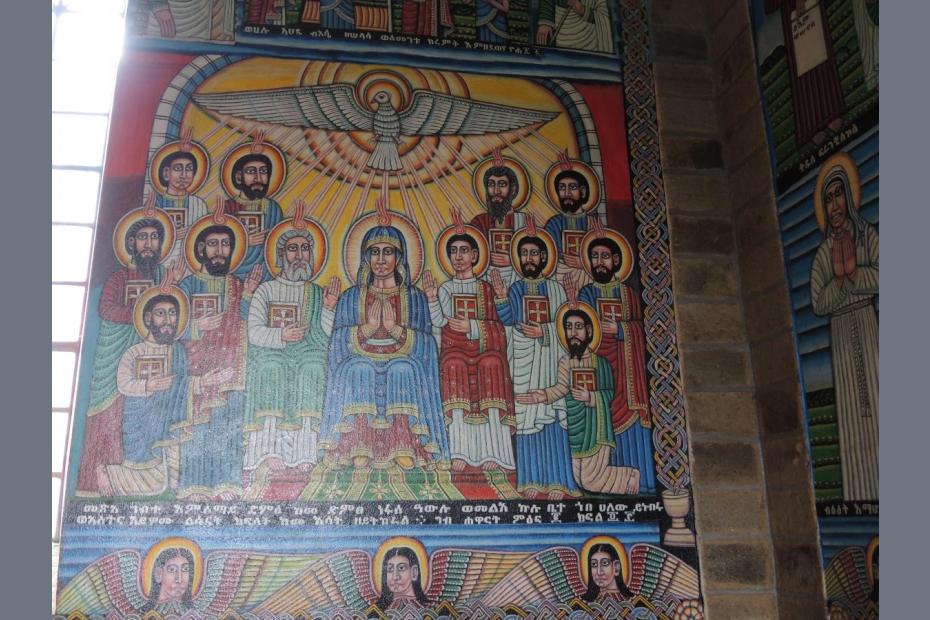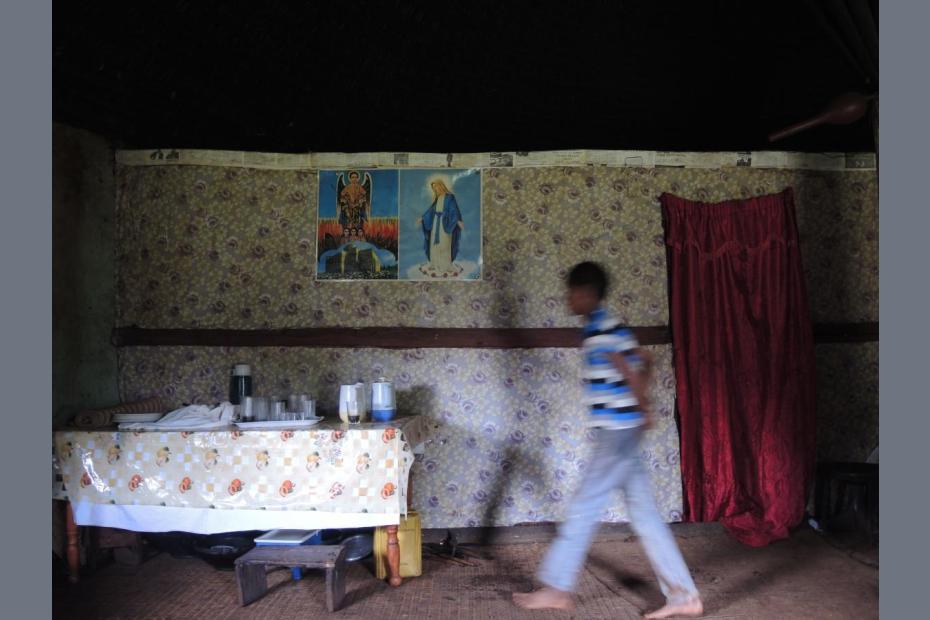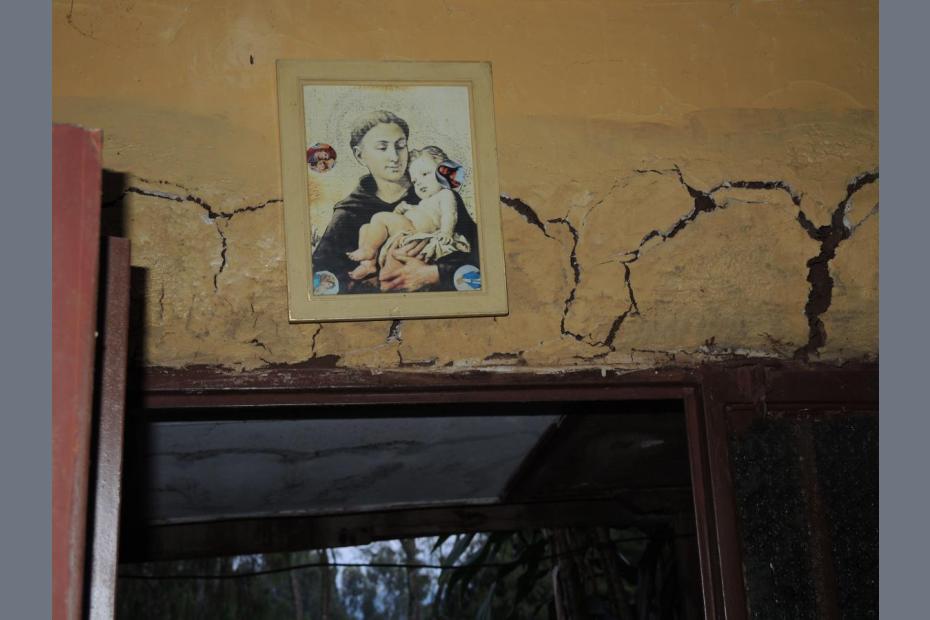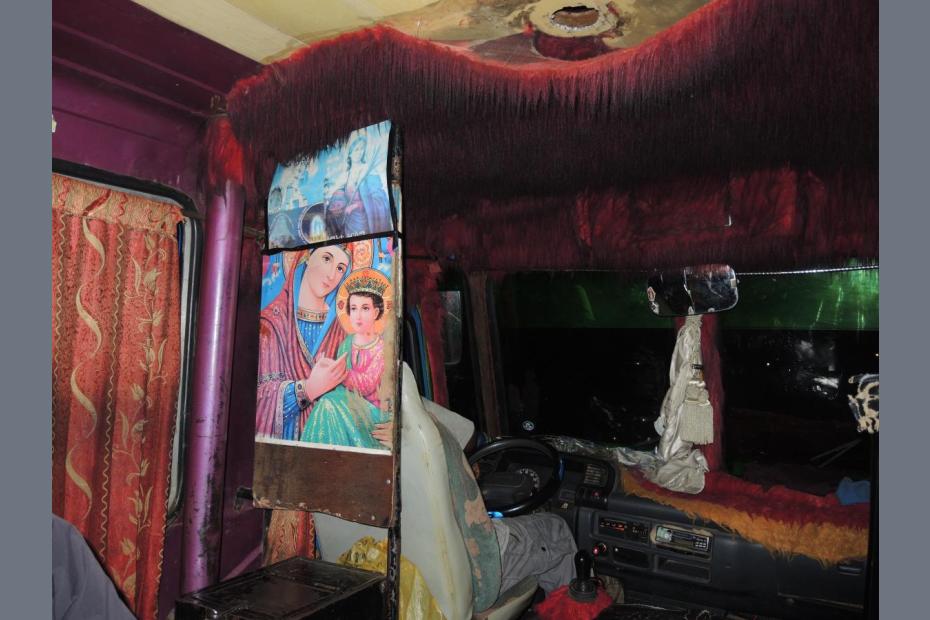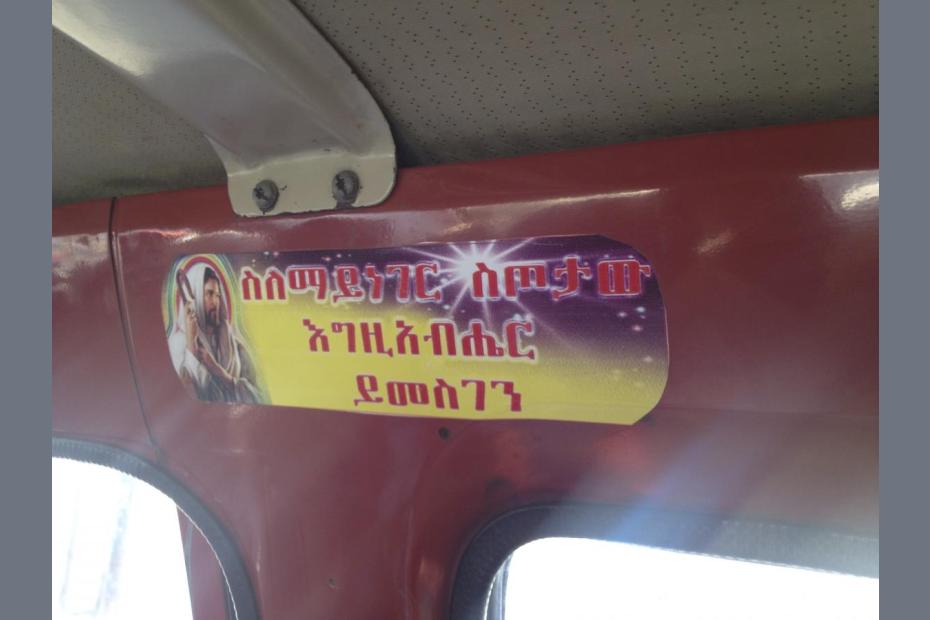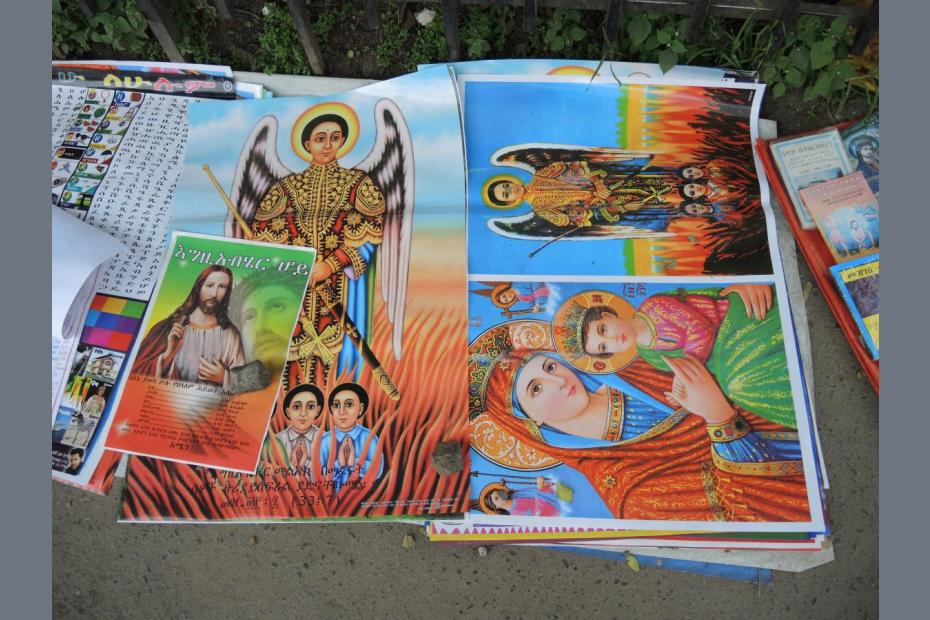Saints play an important role in the life of Ethiopian Catholics, as they do for Ethiopian Orthodox believers. In Ethiopia, the range of saints who are significant to believers is much narrower than in many other Catholic countries, even though the Latin rite liturgical calendar in Ethiopia honors a large number of saints.
Ethiopian Catholics note that the most popular saints are “biblical”; but more interestingly, the most popular saints (after Mary) are actually angels – Gabriel, Michael, and Raphael. Asked to describe the significance of these saints, Ethiopians emphasize their central role as messengers between God and man, and especially value Gabriel’s role as messenger between God and Mary at the Annunciation. These saints are often described as strong protectors, and they are often pictured with swords in Ethiopian Christian iconography. Their popularity derives from northern, Orthodox, Amharic Christianity.
One Catholic expressed her devotion to St. Gabriel because that was a church connected to her family, and because Gabriel was the angel who brought the word of God to Mary. She felt that Gabriel had interceded for her. “Because Gabriel is a messenger, I believe that he will take my prayer to God.”
There is a strong belief in Ethiopia in the possibility of miracles, that God can intervene in the world and make good things happen, and often does so. Prayer is seen ultimately as something that goes to God, whether directed through Mary — or the saints — or directly to the Trinity.
Interviewees for this project described the Virgin Mary as a figure who helps all Ethiopians to figure out their proper role in the world, as submissive, humble persons before God. They pointed to a long history of powerful queens and other woman leaders in Ethiopia, and suggested that such submission need not mean that women were not meant to have important public roles. Mary’s example, they said, was one for both men and women.
Further south one can find somewhat greater reference to a few European saints whose devotions were brought by Italian missionaries, especially St. Anthony. St. Anthony’s feast is a major celebration in Emdibir, where he is patron of the Cathedral, drawing believers from long distances.
